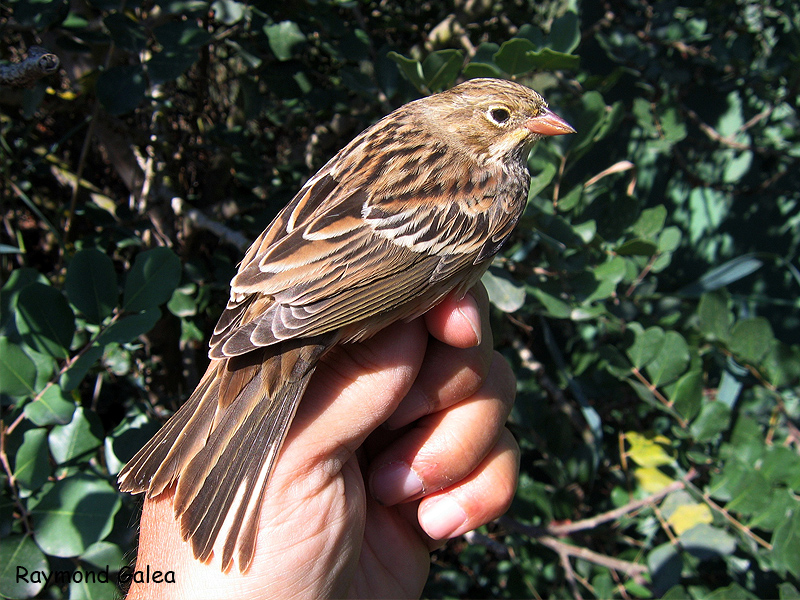Ortolan Bunting
Scientific Name: Emberiza hortulanaMaltese Name: Ortolan
Family: Buntings (Emberizidae)
Occurence: Scarce
Breeds in Malta: No
Overview:
A native of most European countries and western Asia the Ortolan Bunting migrates in autumn to tropical Africa, returning at the end of April or beginning of May. In appearance and habits it much resembles its congener the Yellowhammer, but lacks the bright colouring of that species; the Ortolan's head, for instance, is greenish-grey, instead of a bright yellow. The somewhat monotonous song of the male resembles that of the Yellowhammer. Its nests are placed on or near the ground; the eggs seldom show the hair-like markings so characteristic of most buntings' eggs. Seeds are the natural diet, but beetles and other insects are eaten when feeding young. The species is in decline in at least ten European countries, although the total population is estimated in 400,000-600,000 pairs. The reasons proposed for this strong regression are habitat degradation, reduction of nesting places, and changes in the agricultural landscape. Hunting and Trapping (in particular in Landes) is responsible for taking about 50,000 birds per year (ten times the Ortolan population of Germany, Belgium and the Netherlands). The ortolan is one of the dishes of French country cuisine. It is now against the law to sell them in France - but not to eat them.
Status:
Scarce migrant. Scarcely seen by birdwatchers but it is regularly trapped illegaly by trappers.
When to See:
Seen both in Autumn (September and October) and in Spring (late March till May) but it is more regular in Spring.
Where to See:
May be seen in areas with good garigue habitat and in valleys. Comino and Lunzjata Valley are good spots.
Photographs:
 |
Female Ortolan Bunting, 23rd April 2006, Comino |
 |
Juvenile Ortolan Bunting, 22nd September 2008, Simar Nature Reserve |
Back to Bird Species List